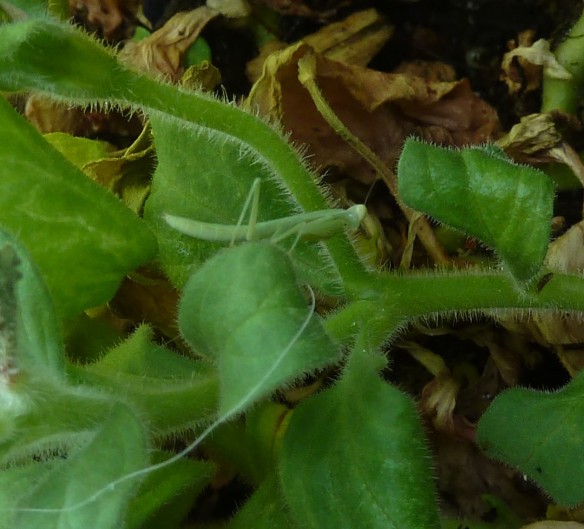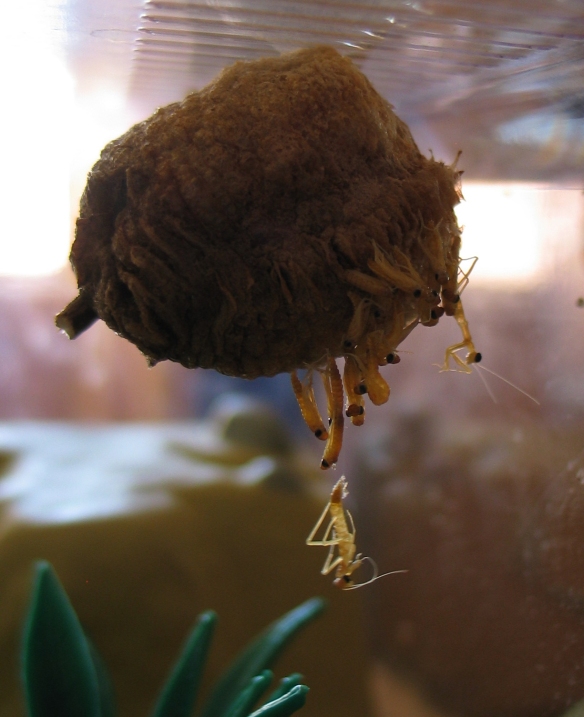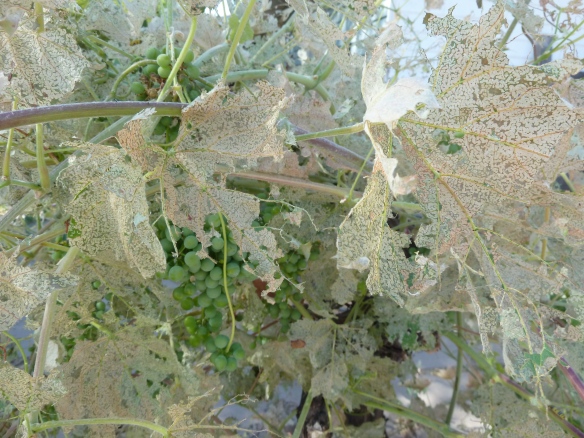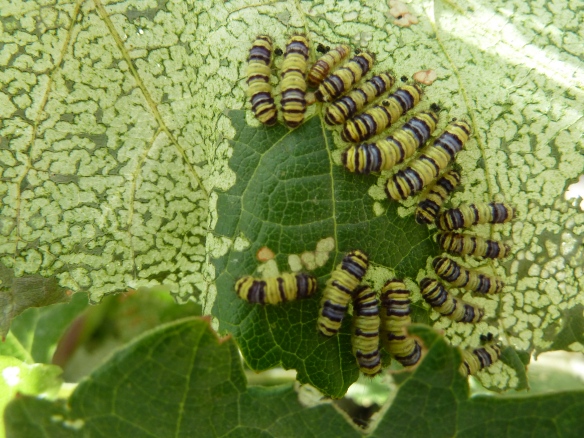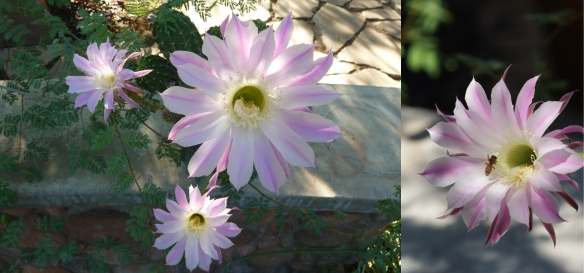So I’m watering my heat-beat pots of petunias and spy this little critter hanging out in the flower foliage.
Here’s the test:
- Did you, like I did upon seeing this bug, exclaim “Awwww” and feel a sudden surge of elation?
- Did your heart race, making you feel giddy like when you see an old flame, new flame or aspirational flame?
- If you saw this little Mantis in your garden, would you dash for your camera, so you could share a snap of this creature as though it were your own child taking it’s first bite of solid food?
If you can answer YES to any or all of these questions, you may be a garden nerd.
What’s so awesome about the Praying Mantis?
For me, it takes me back to when I was a kid and we lived in the San Joaquin Valley raising Lima Beans. Gigantic Praying Mantises, bigger than my kindergartner hand frequented the neighborhood where we lived in Modesto. A few years back, to share the wonder of this lanky bug with my offspring, I bought an egg case from a local nursery. After securing the case in a small bug house, we watched in awe as the tiny babies oozed out of the case.
Then the lessons in Praying Mantis ecology began. Turns out, they eat only live things, fruit flies for starters, then crickets and eventually each other. Delightful. The kids and I became frequent shoppers at the local exotic pet shop where all manner of live food could be purchased. (And by the way, I watched lizards pole dance there…well, twig dance anyhow, but it was exotic) I kept the fruit flies in a plastic tub in my kitchen cabinet. They lived on a paste that smelled like rotting trash (see an old blog for further gross details). When the fifty or so Praying Mantises snacked themselves down to the three largest bugs, we set them free on the rose bush in the front yard.
I had never seen Praying Mantises in the garden before the release, but since then have infrequent sightings. The one I saw this morning may be a descendant of that batch of three. Seeing it reminded me of being a kid, having my own little kids and the beautiful cycle of life. Pretty sweet for a bug that eats its lover’s head off during sex.

